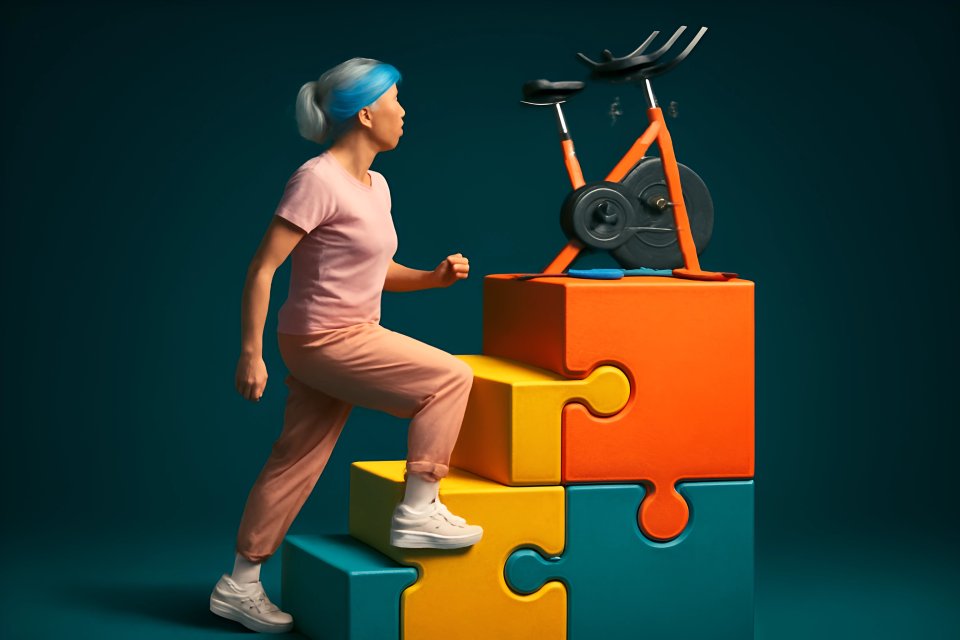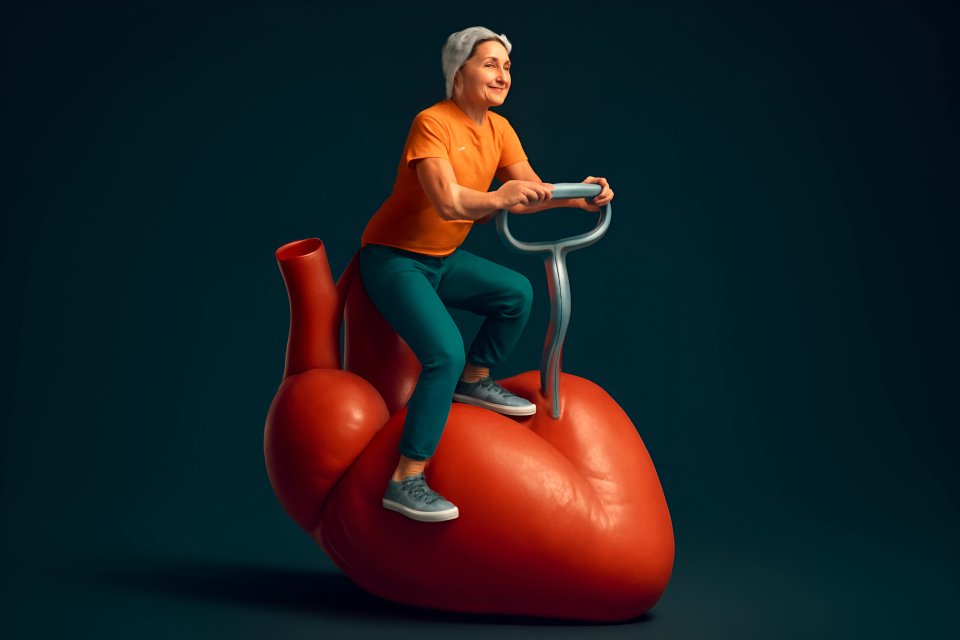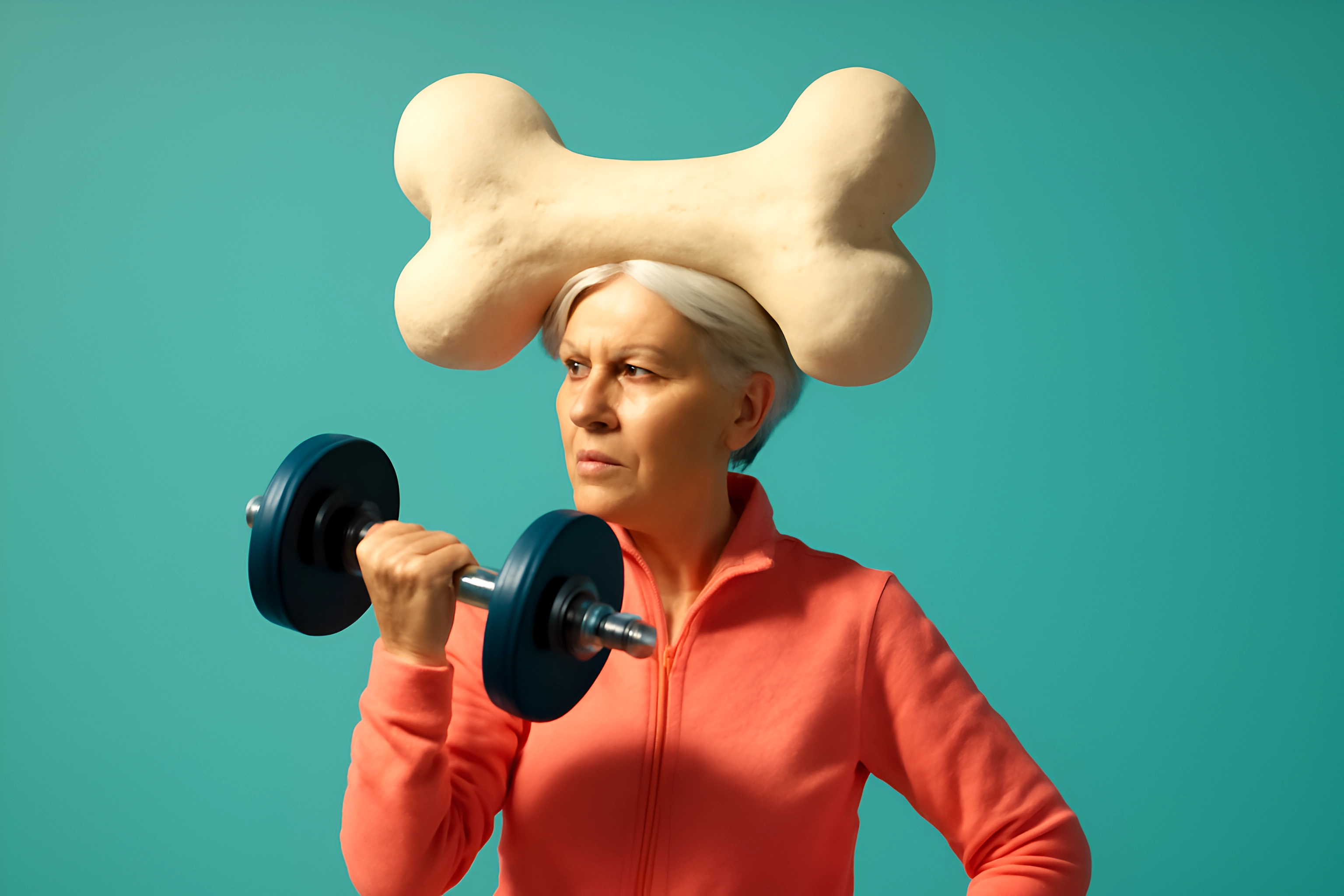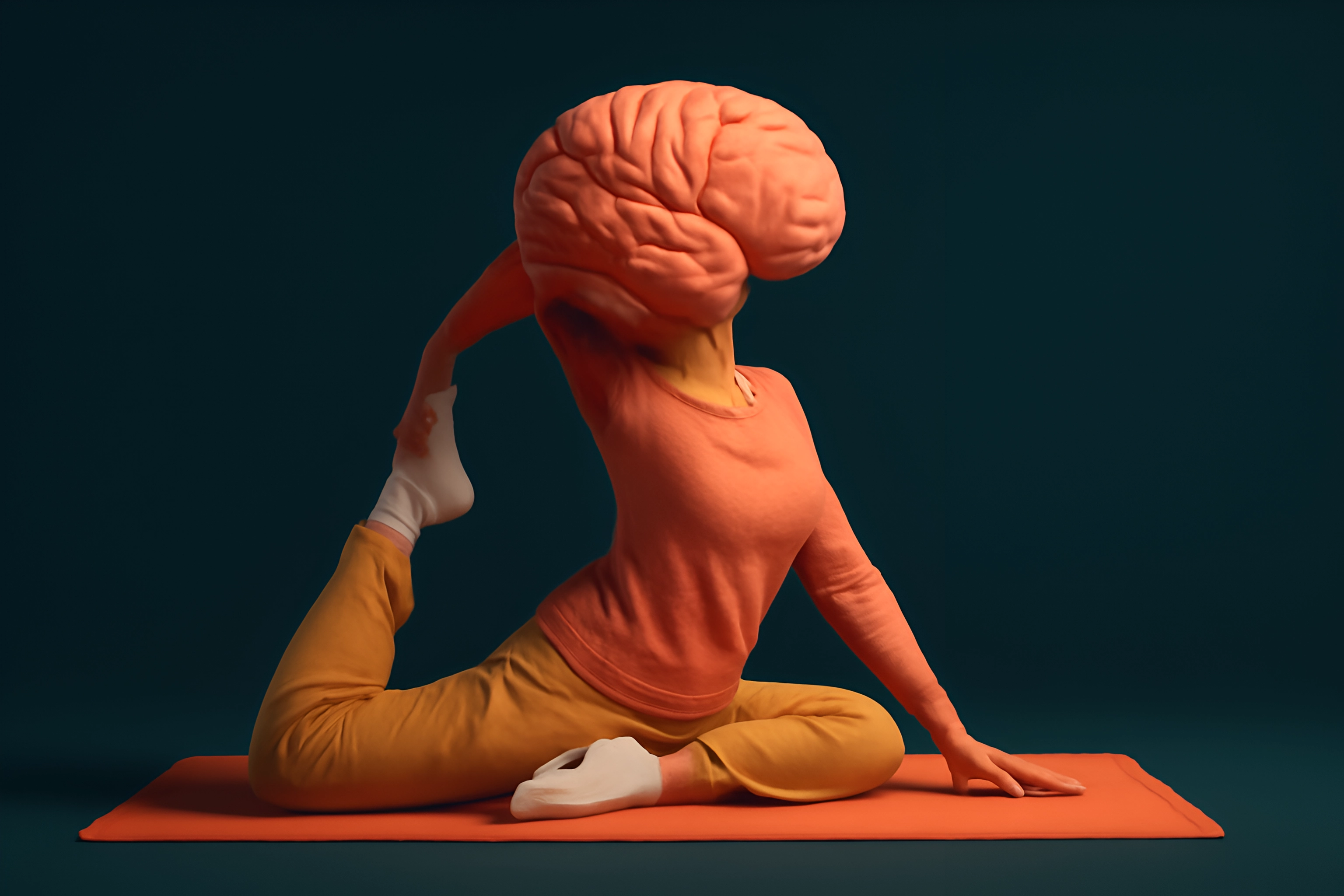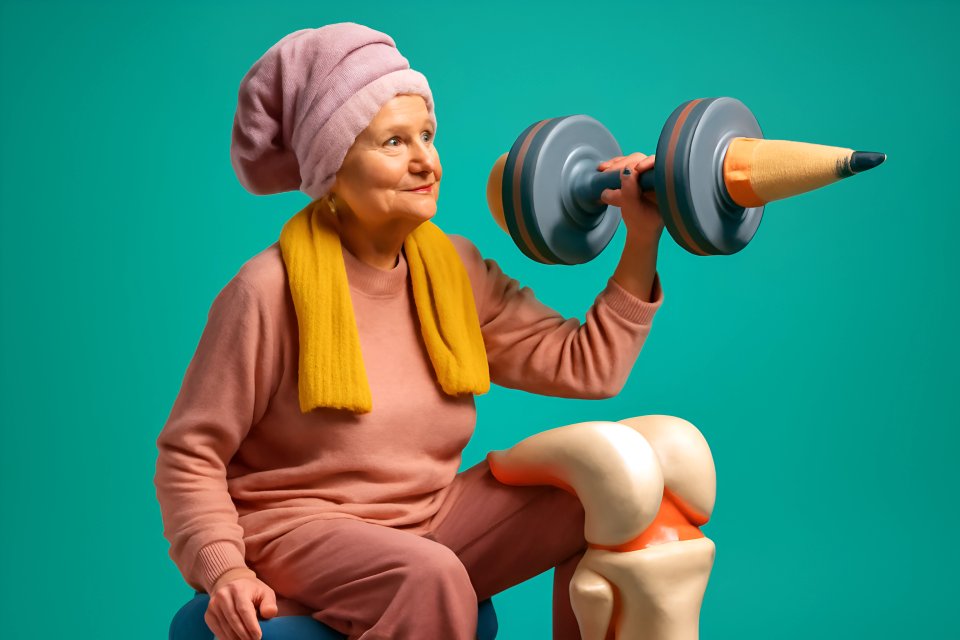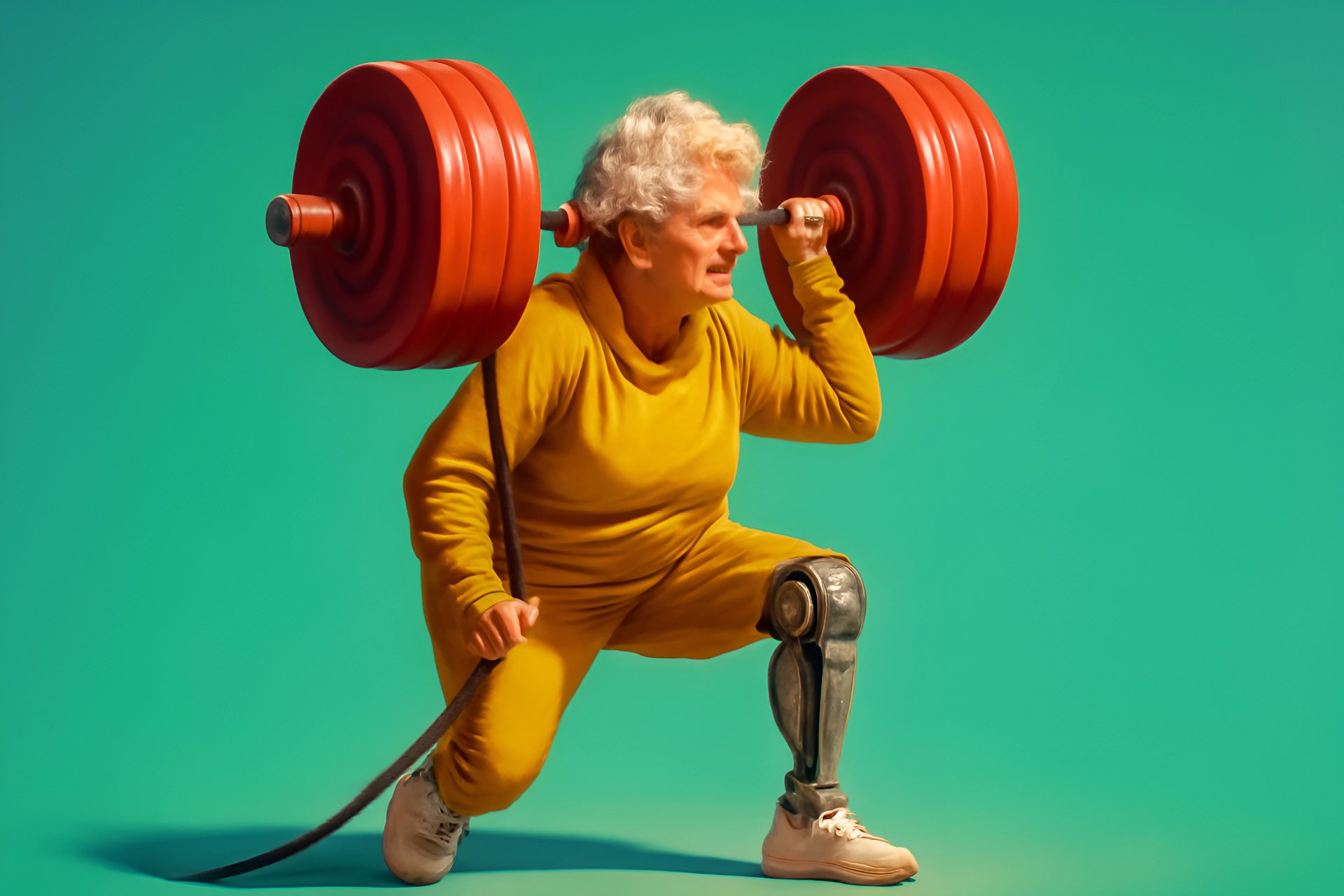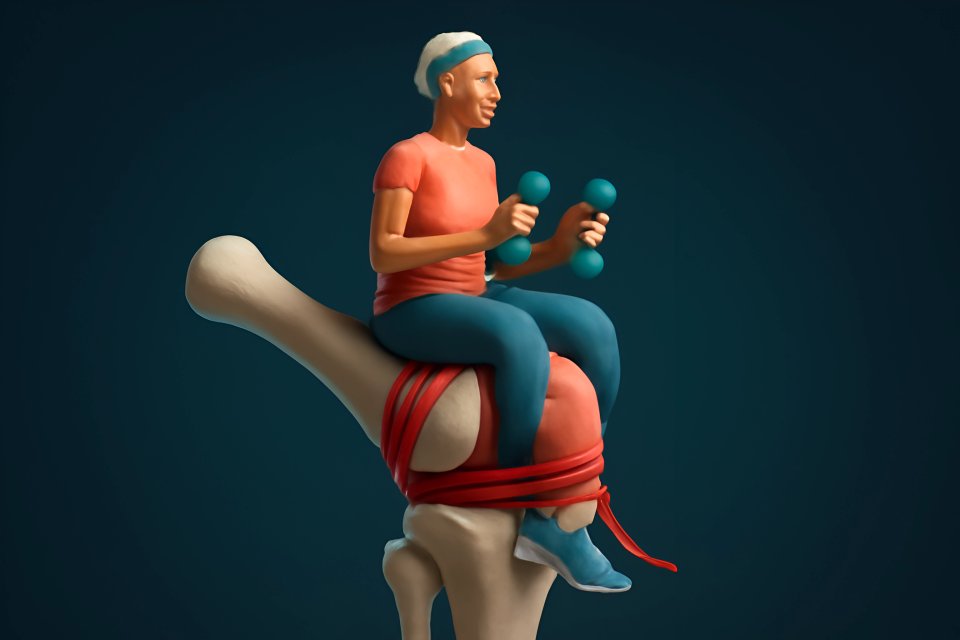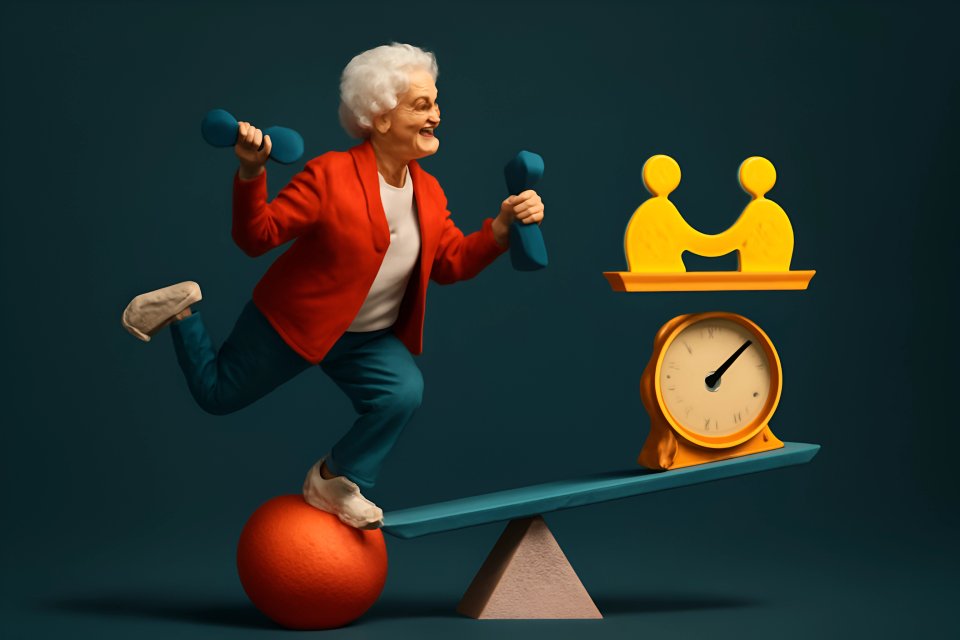
Have you ever caught a glimpse of yourself in a reflection and felt a disconnect? The person you see has the same spirit, the same spark, but the body feels… different. A new ache in the morning, a hesitation before taking the stairs, or a quiet fear of losing the strength and independence you’ve always cherished.
This is not a surrender. It’s a signal to start working smarter, not just harder. Welcome to the world of adaptive fitness—your personal strategy for reclaiming your power. This isn't about watered-down exercises; it's about customizing movement to honor your body's wisdom, building strength that serves you in the real world, and forging a path to a more vibrant, confident future, right from the comfort of your home.
Forget the intimidating gyms and complicated routines. This guide is your simple, safe, and effective roadmap to starting adaptive home workouts over 50. We’ll walk you through every step, proving that your journey to feeling stronger and more energetic can begin today, with a single, smart move.
Why Adaptive Fitness is Your Secret Weapon After 50
Let's be brutally honest. The stakes are higher now. We're not just exercising to look good; we're fighting for our quality of life, our freedom, and our ability to show up for the people and activities we love. Adaptive fitness is the most intelligent way to wage that fight and win.
This is your secret weapon against sarcopenia, the age-related muscle loss that can creep in and steal your strength. Research from the Mayo Clinic shows that resistance training is a powerful tool to preserve muscle mass and metabolic health, which is crucial for maintaining your energy and independence. It’s the difference between struggling with a bag of groceries and carrying it with ease, or worrying about a fall versus walking with unshakable confidence.
More than just muscle, this is about protecting your very foundation. Adaptive exercises are designed to be low-impact, strengthening the muscles that support your frame without punishing your joints. This approach directly improves your balance and stability, which is critical, as falls are a significant health risk for older adults. By focusing on functional movements that support daily tasks, you are investing in a future where you remain self-reliant and in control.
The Golden Rules: Safety and Preparation for Home Fitness for Older Adults
Before you take a single step, we need to lay down the law. Your safety is the absolute priority. Following these golden rules isn't just a suggestion; it's the foundation upon which all your future success will be built.
The Most Important First Step: Consult Your Doctor
This is non-negotiable. Before you begin this or any new fitness program, you must have a conversation with your healthcare professional. They can help you evaluate any underlying conditions like heart health or osteoporosis that might require specific modifications.
Think of this as getting the official green light for your journey. It’s a simple step that provides immense peace of mind. It ensures you are starting from a place of knowledge and safety.
Learn to Listen to Your Body: The "No Pain, More Gain" Philosophy
Throw out that old, damaging mantra of "no pain, no gain." In our world, the philosophy is no pain, MORE gain. It’s about learning the difference between the warm, satisfying burn of a muscle getting stronger and the sharp, stabbing, or grinding pain of a joint in distress.
The first is a sign of progress; the second is a stop sign. If you feel joint pain, stop immediately. True, sustainable fitness is a partnership with your body, not a battle against it.
Setting Up Your Space: What You Really Need
You don't need a fancy home gym to get started. Your workout sanctuary can be created with a few simple, essential items. Your goal is to create a clear, hazard-free zone where you can move with confidence.
Your must-haves are simple: a sturdy chair (one without wheels is crucial), a clear patch of floor space, and a wall you can use for support. That's it. If you want to add a few optional tools, a yoga mat can provide cushioning, and simple resistance bands or even soup cans can serve as your first set of weights.
The Building Blocks of a Balanced Senior Fitness Routine
A strong, resilient body is a balanced body. A truly effective routine isn't just about one type of movement; it's about integrating four key pillars. Each one plays a unique and vital role in your overall health and well-being.
The 5-Minute Gentle Warm-Up
Think of a warm-up as waking your body up gently. Its purpose is to increase blood flow to your muscles and lubricate your joints, preparing them for the work ahead. This simple step dramatically reduces your risk of injury.
A few minutes of marching in place, gentle shoulder rolls, or slow arm circles are all you need. This isn't about breaking a sweat. It's about signaling to your body that it's time to move.
Strength & Stability Exercises
This is where you build your foundation. Strength exercises are designed to combat muscle loss, support bone density, and improve your ability to perform daily tasks. According to AARP, exercises like squats are among the best for building functional strength that you'll use every single day.
We will focus on using your own body weight and simple tools like your chair. These movements are the key to maintaining your independence. For those with specific concerns, exploring strength training modifications for seniors with joint pain can provide even more tailored options.
Low-Impact Cardiovascular Health
Your heart is a muscle, and it needs exercise too. Low-impact cardio gets your heart rate up to improve stamina and cardiovascular health, all without the jarring impact on your joints. The CDC recommends that older adults aim for 150 minutes of moderate-intensity activity per week, and this is how you get there safely.
Movements like seated marching or step-touches get the job done effectively. If you're looking for more variety, our guide to low-impact cardio ideas for heart health offers a wealth of options to keep your routine fresh and engaging.
The 5-Minute Essential Cool-Down & Stretch
Your workout isn't over until you've cooled down. This final step is essential for improving your flexibility, preventing post-workout stiffness, and helping your heart rate return to normal gradually. It’s your body’s "thank you" for the work you just put in.
This involves gentle, static stretches where you hold a position for 20-30 seconds without bouncing. Think of a seated hamstring stretch or a gentle chest opener. This is your moment to breathe and appreciate the strength you're building.
Your First Week: A Sample Adaptive Home Workout Plan
Ready to put it all together? Here is your concrete, actionable plan to start today. Aim to complete this 20-minute routine 3 times this week, with at least one rest day in between each session. Remember, focus on your form, not your speed.
| Exercise | How-To Instructions | Adaptive Tip |
|---|---|---|
| 1. Chair Squats | Stand in front of a sturdy chair, feet shoulder-width apart. Slowly bend your knees and lower your hips back as if you're about to sit down. Go as low as you comfortably can, then press through your heels to stand back up. |
Easier: Don't go as low, or lightly touch the chair for balance. Harder: Hold light weights (or soup cans) at your chest. |
| 2. Wall Push-Ups | Stand facing a wall, about arm's length away. Place your palms flat on the wall at shoulder height. Slowly bend your elbows and lean your body toward the wall, keeping your back straight. Push back to the starting position. |
Easier: Stand closer to the wall. Harder: Step your feet further back from the wall. |
| 3. Seated Marches | Sit tall in your chair with your feet flat on the floor. Engage your core and lift one knee up toward your chest. Lower it with control and repeat on the other side. |
Easier: Lift your feet just an inch or two off the floor. Harder: Lift your knees higher or add light ankle weights. |
| 4. Seated Leg Extensions | Sit tall at the edge of your chair. Extend one leg straight out in front of you, squeezing your thigh muscle. Hold for a second, then slowly lower it back down. |
Easier: Don't extend the leg fully. Harder: Hold the extension for 3-5 seconds or add a resistance band. |
| 5. Standing Hip Abduction | Stand tall, holding onto the back of your chair for support. Keeping your leg straight, slowly lift one leg out to the side. Lower it back down with control. |
Easier: Reduce the range of motion. Harder: Add a light resistance band around your ankles. |
Beyond the First Week: How to Build a Lasting Habit
That first week is a monumental victory. Now, the goal is to turn that initial momentum into a lasting, life-changing habit. This is where you transform effort into an unbreakable routine.
The Art of Safe Progression
Your body is smart; it adapts. To keep getting stronger, you need to gradually increase the challenge. After a couple of weeks, once the movements feel comfortable and controlled, you can progress by adding 2-3 more repetitions to each exercise, holding a stretch for 10 seconds longer, or adding a second set after a minute of rest. The key is to make small, incremental changes that feel challenging but not overwhelming.
Consistency Over Intensity
This is the core philosophy at FitOverFifty. A 15-minute workout performed three times a week is infinitely more powerful than one grueling, hour-long session that leaves you sore and unmotivated for a month. According to the National Institute on Aging, consistent leisure-time activities are linked to greater longevity.
Schedule your workouts like you would any important appointment. Anchor them to an existing part of your day, like right after your morning coffee. Once you're ready to build a more comprehensive plan, our guide on how to build a low-impact exercise routine over 50 is the perfect next step.
Find Your Joy in Movement
For a habit to stick, it must be enjoyable. This is where we connect physical activity with mindful aging. Put on your favorite music from your youth, listen to an engaging podcast, or simply focus on the feeling of your body getting stronger with each movement.
Notice the small victories outside of your workout time. Did you climb the stairs without getting winded? Did you pick up a grandchild without a twinge in your back? Celebrating these real-world wins is the ultimate motivation and a key part of integrative approaches for stress-free living.
Conclusion: Your Journey Starts with a Single, Smart Move
Let's bring it all home. You now have the knowledge and the plan to take back control of your health. The path forward is clear: start slow, listen to your body's wisdom, focus on the balanced building blocks of fitness, and choose consistency above all else.
This journey is not about becoming a super-athlete. It's about something far more important: reclaiming your energy, protecting your independence, and living your life with the vitality you deserve. It's about proving to yourself, every single day, that it is never too late to invest in your own strength.
Your future self will thank you for the single, smart move you make today.
We'd love to hear from you! What's the first adaptive exercise you're excited to try? Share your plans in the comments below to inspire our community!
FAQ Section
Q1: How often should a beginner over 50 work out?
A: The CDC recommends starting with 2-3 non-consecutive days per week, for about 15-20 minutes per session. This allows your body adequate time for rest and muscle recovery, which is when you actually get stronger. As you feel more comfortable, you can gradually increase the duration or frequency.
Q2: Is it okay to feel sore after these beginner workouts for seniors?
A: Yes, it is perfectly normal to experience mild muscle soreness, often called Delayed Onset Muscle Soreness (DOMS), a day or two after your workout. This is a sign your muscles are adapting. However, you should never feel sharp, stabbing, or joint-specific pain; if you do, stop the exercise and consult your doctor or physical therapist.
Q3: Can I do these workouts if I have bad knees or a bad back?
A: Absolutely. Many of these movements, especially the seated exercises, are specifically designed to be joint-friendly. That said, it is essential to get personalized advice from your doctor or a physical therapist to ensure you are choosing the safest and most effective modifications for your specific condition.







